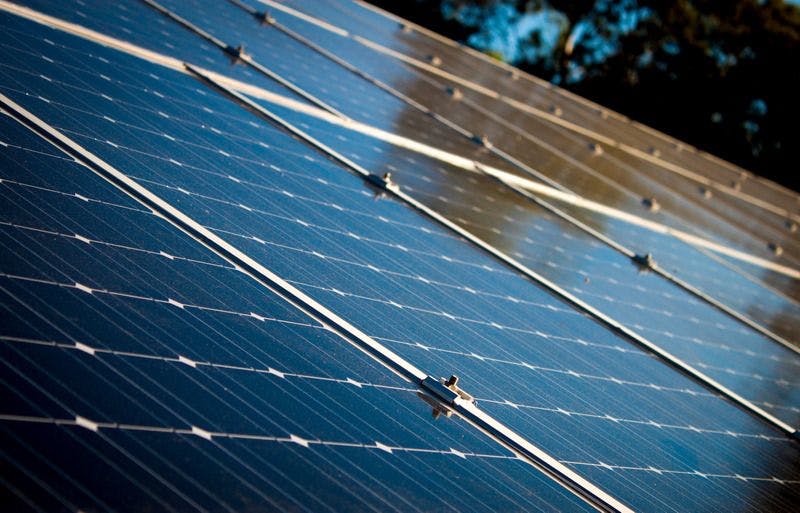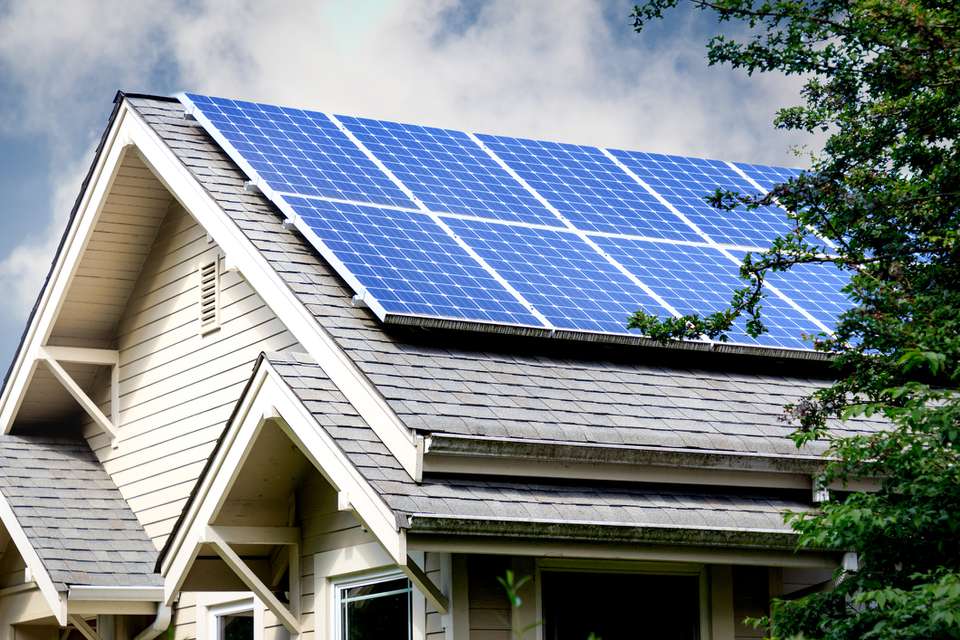Solar panels can be an excellent way to save money on your electricity bills and add value to your home. Generating your own electricity shields you from energy price increases. It’s also nice to know that you are generating carbon-free, green electricity to use in your home and send back to the grid. Your investment will pay back quicker if you are using your own solar direct, so check if solar is worth it for you.
Once you are ready to go, there are a few misconceptions about when and where planning permission is required from your local council to have solar panels fitted.
Solar panels: when is planning permission required?
Solar panels are considered a “permitted development” for most properties, and you don’t generally need to seek planning permission from your local authority to have them installed. There’s no bureaucratic red tape, or a requirement for any contact with your local council whatsoever.

Installing solar doesn’t generally require you to seek planning permission from your local authority
This doesn’t just apply to your roof. Providing certain requirements are met, planning permission isn’t required for roof-mounted solar panels (unless you’re in Scotland), wall-mounted solar panels or even free-standing solar equipment.
You can only have one piece of freestanding solar panel equipment within your property boundary as part of a permitted development. If you want more, you’ll need to apply for planning permission.
However, any solar panel installation must comply with local building regulations, which includes checking whether the roof is capable of supporting the weight of your solar panels. A competent solar panel installer should do this for you as part of their consultation and home survey, but it’s worth understanding and knowing about before you commit to an installation.
Solar panels in a conservation area require planning permission
If you live in a conservation area or world heritage site (this represents roughly 2% of the UK’s population) you will need to ensure that your solar panels face away from and are not visible from a road. If the only south-facing part of your roof faces a road, you will need to contact your local authority to ask for planning permission.
This rule only applies to those in a conservation area. If you’re not in one, you can have solar equipment installed as you please.
Solar panels on a listed building require planning permission
If you live in a listed building, you will also need to seek planning permission. If your building is very old or it’s architecturally significant, you may want to check with your local authority before having solar equipment installed anyway, just to be on the safe side.
It’s worth noting that this applies to freestanding solar equipment and wall-mounted solar panels as well. If you’re in a conservation area or live in a listed building, check with your council as to whether you need planning permission before installing solar equipment of any kind on the land that you own.

For listed buildings, even freestanding solar installations need planning consent
Other rules to consider when having solar panels installed
Solar panels are classed as permitted developments and do not require planning permission if they adhere to the following:
- The panels must project no more than 200mm off the edge of your roof.
- No part of the panel should exceed the highest point of the roof.
- Panels must not exceed the existing boundary of the roof.
- Panels must be fitted in a way that minimises the change in appearance of the home and the local area.
- If the panels are no longer used to generate electricity at any time, they must be removed.
There are further requirements for panel installations on flat roofs and walls, such as the panels must not exceed 1.5 metres above the plane of the roof for a flat roof, and that wall mounted installations must not protrude more than 20cm away from the wall.
Of course, there are going to be situations where these conditions can’t be met. If this is the case, your solar panel installer will tell you. It’ll then be up to you to approach your local authority and request planning permission. It’s worth asking for a report from your solar installer as to why it’s not possible to install your panels in line with these conditions.

The UK’s Export Guarantee scheme pays you when you send unused solar to the grid
In Scotland, you’ll need planning permission if you want to install solar panels on a wall or a flat roof. The rules are the same as the rest of the UK if you have a pitched roof.
Connecting your solar panels to the grid
Most homes with solar panels fitted will have them connected to the grid. The local DNO (distribution network operator) should be informed of any solar panel installation that takes place within their area. You won’t generally have to do this yourself; your solar installer should take care of it for you. Your solar installer should also confirm that your installation meets all local authority and government requirements before it’s installed.
Any solar system above 3.68KW will need permission from the local DNO before installation can go ahead. Again, your solar installer should manage this for you.
Most houses in the UK can have solar fitted without any issue or requirement for permission from the local authority. However, if there are issues, they’re normally very easily solved, and for the most part your solar installer will take care of them for you. All you’ll need to do is contact the local council, provide them with any documentation the solar installer gave you as part of their survey and put in an application for planning permission.
Local authorities are allowed a maximum of 8 weeks to come to a decision on any planning permission application (13 weeks if it’s an unusually large or complicated installation) so if you do require planning permission, you shouldn’t have to wait too long before you can start generating your own electricity!
